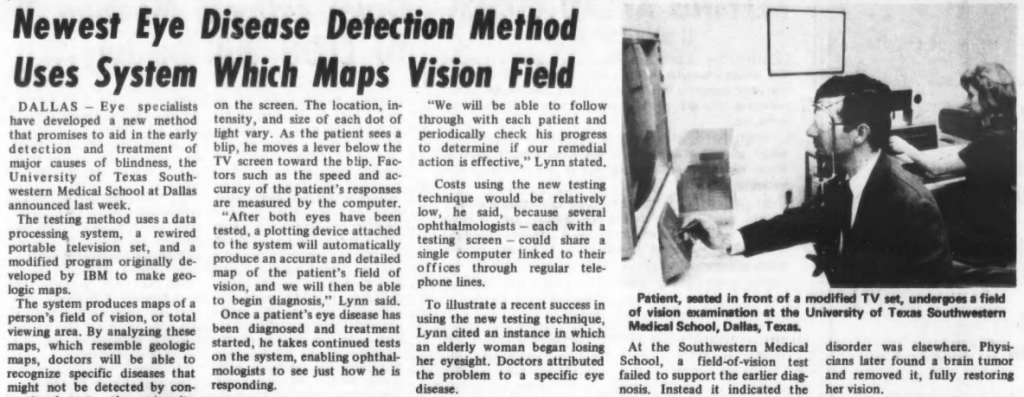July 9, 1969: Computers lower cost and increase accuracy of eye exam
One of today’s most standard eye exam procedures, a visual field test, was transformed with the aid of computers and data processing.

Modern standard eye exams often include a visual field test, a procedure which allows doctors to spot issues like blind spots and reduced peripheral vision. To run the test, a patient is shown a series of dots across a screen and gives a response about if each dot is visible. Together, the locations of the points and the patient’s response data are used to generate a mapping of their visual field. Doctors use visual field tests to diagnose millions of people each year with conditions such as glaucoma or brain tumors.
Before 1969, visual field tests were rarely used. Although doctors at the time recognized the value of visual field tests in detecting early signs of blindness, the tests were costly and unreliable. Even though the tests required expensive equipment and a highly trained operator, the results could be heavily skewed by human error. A new system developed at the University of Texas Southwestern Medical School at Dallas was ready to change all of that, using computers to make the test both inexpensive and much more accurate.
According to an article in Computerworld magazine, the system used a “data processing system, a portable television, and a modified program originally developed by IBM to make geologic maps.” The test procedure in 1969 appears to be nearly identical to the modern version, involving a patient being shown a series of white dots of light across a screen and then being asked to move a lever towards each point. The locations, intensity, and size of each dot was programmed on a punch card and fed to the data processing system, which was connected to the portable television. Once the patient has finished the test, the modified IBM program drew an “accurate and detailed” map of their vision.
The new system eliminated the need for a highly trained operator to run the test but created new opportunities in medical applications of computing. It further reduced the cost by allowing several doctors to split the cost of the equipment by connecting to a centralized IBM 1130 computer.
–By Kathleen Esfahany